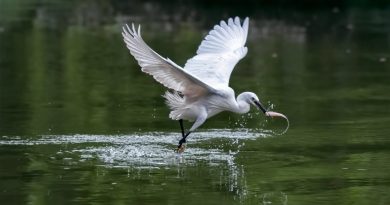Strategies – The Incredible Migration of Birds
Challenges and Laid Strategies
Bird migration is a fascinating and complex phenomenon in which birds regularly cover long distances between their breeding and wintering areas.
This migration is driven by a combination of factors, including seasonal changes, availability of food resources, and the search for more favorable climatic conditions. Here are some strategies and challenges involved in the incredible migration of birds:
Navigation strategies: Migratory birds employ various navigation strategies to guide themselves during their long journeys. This includes using geographical landmarks such as rivers, mountains, and coastlines, as well as orienting themselves by the sun, stars, and the Earth’s magnetic field. Additionally, recent studies suggest that birds may also use geomagnetic patterns for orientation.
Energy reserves: Migratory birds need to accumulate sufficient energy reserves to sustain their journey, as they often fly for thousands of kilometers without stopping to feed. Before migration, they consume large amounts of food to increase their fat reserves, providing energy during the flight. During migration, they minimize energy expenditure by flying at higher altitudes where air resistance is lower.
Overcoming geographical barriers: During migration, birds face various geographical obstacles such as oceans, mountains, and deserts. To overcome these barriers, some bird species engage in longer nocturnal flights and take advantage of favorable winds to conserve energy. Others opt for coastal routes or follow land routes that provide resting and feeding areas along the way.
Risks and threats: Migratory birds encounter various challenges and threats during their journey. The destruction of natural habitats along migratory routes, such as wetland drainage and loss of feeding areas, can jeopardize the availability of crucial resources for birds. Additionally, pollution, illegal hunting, and collisions with human structures like buildings and communication towers pose significant dangers to migratory birds.
Conservation and protection: Conservation of migratory birds is essential to ensure the continuity of this natural spectacle and the maintenance of biodiversity. This includes protecting key areas along migratory routes, establishing reserves and natural parks, controlling illegal hunting, and implementing measures to minimize collisions with human structures. International cooperation is also crucial as many migratory birds cross borders between countries during their journeys.
The incredible migration of birds is an extraordinary example of adaptation and persistence in the animal kingdom. These birds demonstrate astonishing navigation skills, physical endurance, and adaptation to different environments throughout their migratory journeys.
Understanding these strategies and challenges of bird migration is crucial for their conservation and protection. Collaboration among scientists, conservationists, governments, and local communities is essential to ensure the preservation of habitats necessary for migratory birds along their routes.
Furthermore, it is important to promote awareness of the importance of migratory birds and their role in ecosystems. Public education can inspire individual and collective actions to protect coastal, forested, wetland, and other crucial ecosystems for migratory birds.
Conclusion:
Bird migration is a magnificent spectacle that reminds us of the diversity and resilience of life on Earth. Preserving these natural wonders not only benefits the birds themselves but also contributes to the health of the ecosystems they inhabit, promoting the global conservation of biodiversity.




